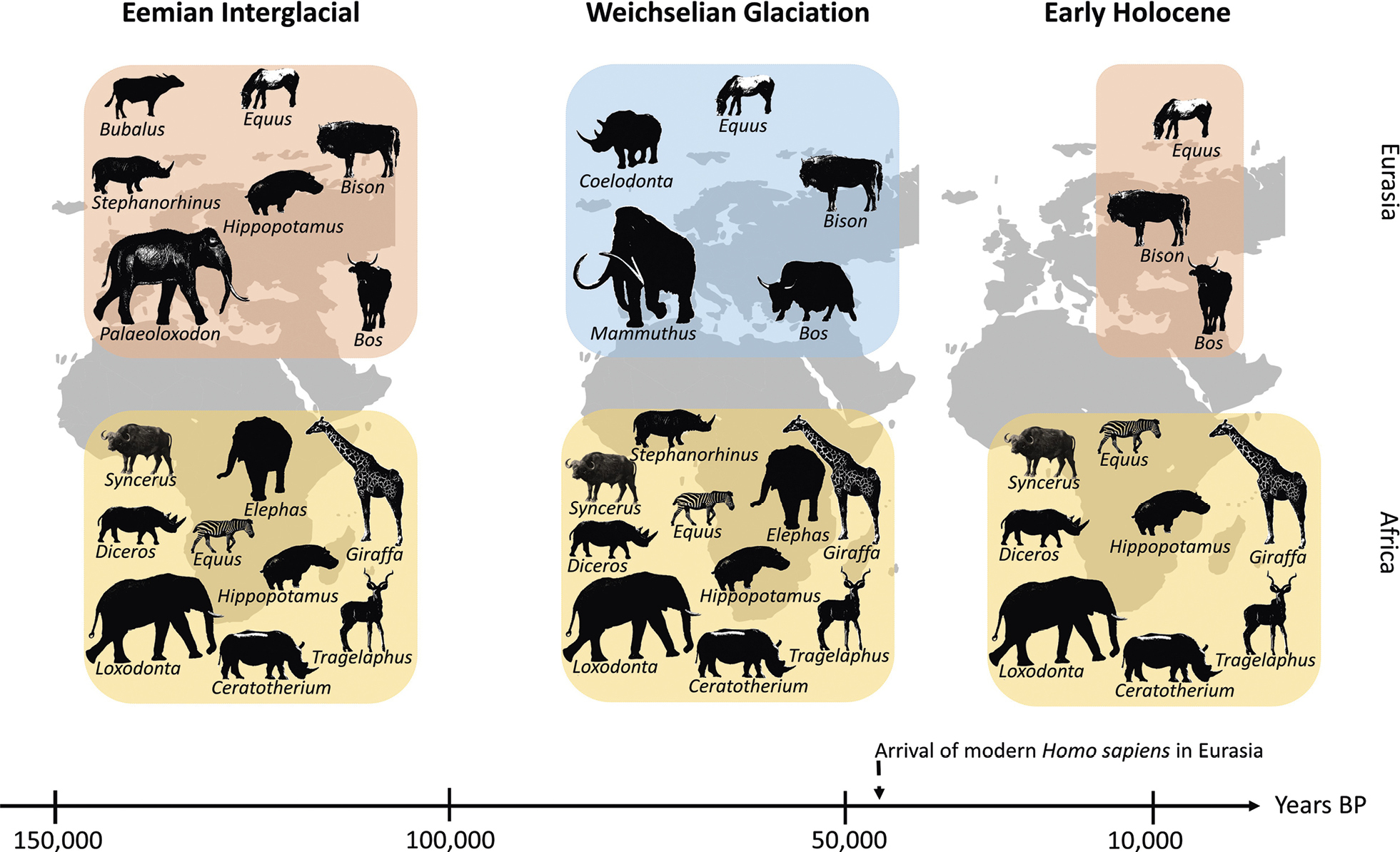
|
||
|
Comparison of central European and southern African megafauna communities at different points in time. Most species of the Pleistocene African megaherbivore guild still exist today. In central Europe, there was a change between warm-adapted and cold-adapted megafaunas. The arrival of modern humans in Europe went along with an extinction wave of the megafauna – consequently, the warm-adapted megafauna was not able to recover/return during the Early Holocene. The remaining / weakened megafauna of the Early Holocene in Europe was no longer able to create an open landscape leading to a dense forest. Since the Eemian Interglacial megafauna in central Europe largely went extinct, the extant / still existing African megafauna appears to be a good reference frame to study megafauna-ecosystem interactions that also occurred in central Europe during the Last Interglacial. Human activity but not climate was the main driver of the megafauna extinction, as Africa is the only example were the Pleistocene megafauna still exists. Animal sketches were adapted from the following sources: Palaeoloxodon: https://commons.wikimedia.org/wiki/File:Elephas-antiquus.jpg licence: CC BY-SA 4.0; Stephanorhinus: https://commons.wikimedia.org/wiki/File:Hemitoechus2011.jpg#file licence: CC BY-SA 4.0; Mammuthus and Coelodonta: Mauricio Anton in: Sedwick (2008), Creative Commons Attribution License. All other animal sketches were adopted from own photos: Bos (Eemian and Early Holocene): U. Zeller, all others: T. Göttert. |